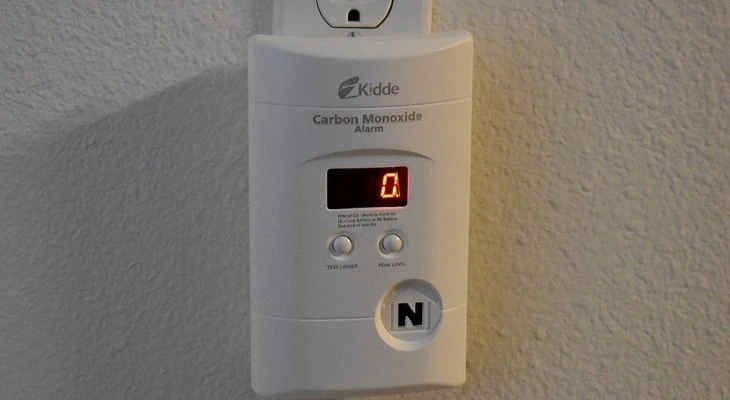If your carbon monoxide detector keeps going off at strange times of the day for no visible reason, this is a problem you should not ignore.
Eventually, you might get used to the occasional chirping and may fail to realize when there’s an actual hazard in your home!
Carbon monoxide detectors can be triggered by close proximity to certain appliances that give off carbon monoxide. A false alarm can also be caused by an internal defect, such as exposed wires or a leaking battery. You must always verify that there’s no real reason for the alarm to be going off in the first place.
Table of Contents
Check for Carbon Monoxide Leaks

First off – are you sure it’s a false alarm? And more importantly, do you know what to do when your carbon monoxide alarm goes off? You should always take each activation of the detector seriously and evacuate the premises unless you’re absolutely certain that it’s a malfunction.
Carbon monoxide poisoning can easily creep up on you with no warning signs. Initial symptoms start off weak enough that most people ignore them. And by the time you realize something’s wrong, you may be unable to get help.
If you’re feeling slight dizziness, headaches, or trouble breathing in areas close to the carbon monoxide detector, this could indicate that it’s actually doing its job properly.
Sometimes the leak might not be coming from your own home. It could be seeping in from a neighbor’s home. If the room with the detector is exposed to a busy road, the exhaust produced by traffic could also be triggering it.
Too Close to Appliances That Give Off Carbon Monoxide
Some appliances produce carbon monoxide during their normal operation. While the amounts are typically small enough to be harmless, they might still trigger a carbon monoxide detector.
Especially if the detector is too close to the appliance and the room is not ventilated properly. Carbon monoxide is not heavier than air, contrary to popular misconception (that’s carbon dioxide).
It’s actually slightly lighter, meaning that it can be found on all levels of a room. This means that it doesn’t take a lot to trigger a false alarm in your carbon monoxide detector if there’s no ventilation in the room at all.
If you’re using any indoor heaters or a dryer that’s not vented properly, these devices can easily lead to significant build-ups of carbon monoxide in the air. Read the manufacturer’s guidelines carefully before using equipment like this in enclosed spaces.
Moisture

While moisture, by itself, won’t trigger a false alarm by default, it can lead to problems with the carbon monoxide detector that could eventually cause it to malfunction. Excess moisture is generally harmful to electronics, especially if it’s allowed to accumulate over time.
That’s why it’s not recommended to install carbon monoxide detectors inside bathrooms and other similar parts of the home. Your basement could also be damp enough to cause the detector to malfunction.
It can be hard to verify if that’s the problem. Replacing the carbon monoxide detector is the only way to make sure that the original problem is gone. Obviously, you shouldn’t install the new detector in the same room if you’re unable to remove the source of excess moisture.
Internal Defect

Even though carbon monoxide detectors are made to be as reliable as possible, they can still fail. Like all electronic devices, the internal circuits might eventually simply give up.
Sometimes, all it takes is one pair of exposed wires to cause a malfunction. The problem may not even be obvious if you open the detector to take a look inside it.
Faulty batteries can also cause issues, especially if they’ve started leaking. Make sure to regularly check your carbon monoxide detector’s batteries to verify their current condition. Replacing them prematurely can be a good idea if you’re afraid that they might go bad.
The carbon monoxide detector may still function as expected if you push its test button. That doesn’t necessarily mean everything is in order with its electronics. Try moving the detector to a different area temporarily and see if the problem persists.
If the detector still gives off random alarms even when it’s taken to a different location, this usually signifies an internal problem. In that case, replacing the entire device is the only reliable option to fix the problem.
Repairing it might be possible, but it may not catch all issues that cause the detector to go off incorrectly.
Conclusion
Your carbon monoxide detector going off doesn’t necessarily mean there’s a leak in the building. It could be caused by problems with the electronic components of the device, or environmental issues.
However, you must never ignore an alarm even if you’re convinced that it’s wrong. All it takes is one mistake to end up with potentially very serious consequences.

